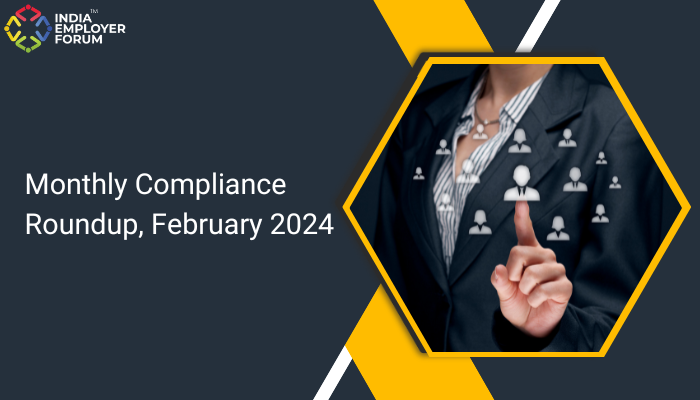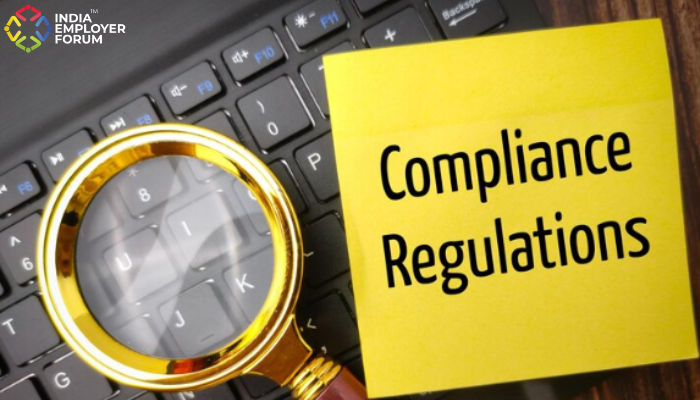In India, the regulatory landscape is intricate and dynamic. Complex compliances necessitate in-depth knowledge, swift action, and efficient coordination, all of which employers must meet. Ad hoc, manual, paper-based procedures have been the norm for compliance functions for many years. Organisational compliance lifecycles that rely on individuals are more likely to experience delays, lapses, and defaults. As governments strive for more corporate responsibility through strict regulation and heavy fines, the price of noncompliance is just too high. Of the 69,233 provisions that make up employer compliances in India, 26,134 carry imprisonment clauses. Effectively, 2 out of every 5 clauses related to doing business in India carry a jail term as the penalty for non-compliance.
There are constant changes in compliance requirements, which compound business uncertainty. In 2022, there were 4,880 regulatory changes, amounting to an average of 13 regulatory changes per day. The regulatory updates relate to important changes in dates, procedures, penalties and calculations, among others, and are published on 2,233 government websites. Often, these changes are applicable immediately, thus requiring time-sensitive implementation. There is no effective manual way for an employer to stay updated on these regulatory changes.
The complexity of the compliance ecosystem lies not only in the number of compliance requirements but also in the ongoing nature of compliances. The business compliance framework is riddled with ‘regulatory cholesterol’ that has hindered the flow of innovation and entrepreneurship. To illustrate, an enterprise with just a single manufacturing unit faces about 50 display requirements, which it must comply with on a continual basis. In addition, more than 40 registers have to be maintained, which should be up-to-date at any given point in time. On average, an MSME or start-up is required to obtain at least 30 different licences, registrations and approvals from various authorities. Ad-hoc, paper-based, and people-dependent manual compliance processes fail to scale to meet an organisation’s compliance requirements.
The way employers approach compliance, though, has been revolutionised by technology in recent years. Employers can take advantage of effective, efficient, and productive ways to handle their specific compliance needs with digital compliance management solutions that combine web, mobile, cloud, and analytics capabilities. Additionally, they facilitate the transition from “reactive” to “dynamic” compliance, which allows organisations to adapt to the ever-changing regulatory environment. As a result, businesses nationwide are rapidly moving to digital compliance systems. The advent of this RegTech revolution has simplified the process of managing relevant licences and registrations for corporations, as well as event-based and ongoing compliances. It has given businesses the ability to monitor changes in relevant compliances and regulatory frameworks.
While the government and different regulatory bodies work towards improving and strengthening the digital infrastructure in compliance, RegTechs are helping corporate India comply better with SaaS tracking and automation products. It is making significant investments in developing three product layers in the compliance space (Tracking, Automation and Filing). These will simplify corporations’ adherence to the law and increase productivity and accuracy. Consequently, businesses can concentrate more on growth than the regulatory burden. There is extensive work being done to develop 3 Product Layers that can aid the compliance functions of a body corporate.
With over 1,500 acts and 69,000 compliances, the tracking layer provides an extensive compliance database encompassing federal, state, and local laws. The platform offers rich dashboards, flexible/analytical reporting capabilities, online chat support, and mobile and web apps with high-security standards. It also facilitates a central repository of all compliance documents with simple extraction utilities and adds a layer of accountability with a required review mechanism. Additionally, regulatory updates are shared nearly instantly (usually within 48 hours of publication). This is controlled by a tech tool created that searches through more than 2,500 regulatory websites on a regular basis to find new notifications.
Automation layers enable easy and fast data processing and automated compliance document preparation for labour and secretarial compliances (such as labour registers & returns and secretarial compliance documents (like meeting-related documentation, i.e. notices, agendas, minutes, resolutions, etc. and other compliance documents, i.e. like annual filings & other e-forms). This also includes automation layers for compliance document preparation for SEBI filings (XBRLs). With automation layers for these 03 regulators, the integrated digital solutions can assist businesses in automating the creation of statutory records for over 45% of all compliance requirements. The technology platforms have also integrated the labour compliance automation platform with Payroll software to eliminate any manual interventions (i.e., as soon as the payroll is processed, most of the registers and returns are generated by the automation layer). The adoption of RegTech in India will play a pivotal role in fulfilling the country’s objective of alleviating the regulatory compliance challenges faced by businesses and enhancing the overall business environment. Their integration into digital public infrastructure (DPI), the implementation of Unique Enterprise Number (UEN), Enterprise DigiLocker, and the utilisation of API-enabled straight-through filings are expected to reshape the regulatory landscape significantly. The complexities of the regulatory ecosystem further outline the need to adopt the three-vector framework of rationalising, digitising, and decriminalising the business compliance environment in the country. By utilising the offerings of digital compliance solutions, businesses can enable themselves to wade through the regulatory waters more effectively. As a result, it pushes the agenda of increasing the ease of doing business for corporations. The country is on track to become a $5 trillion economy in the next few years with the next milestone of $10 trillion GDP by the end of the decade firmly in our sights. To accomplish the visions and goals of Digital India, all stakeholders must fully acknowledge the need for digital transformation and increase the speed of adoption and adaptation.
You might also be interested to read: The Future of Compliance in Supply Chain Management




